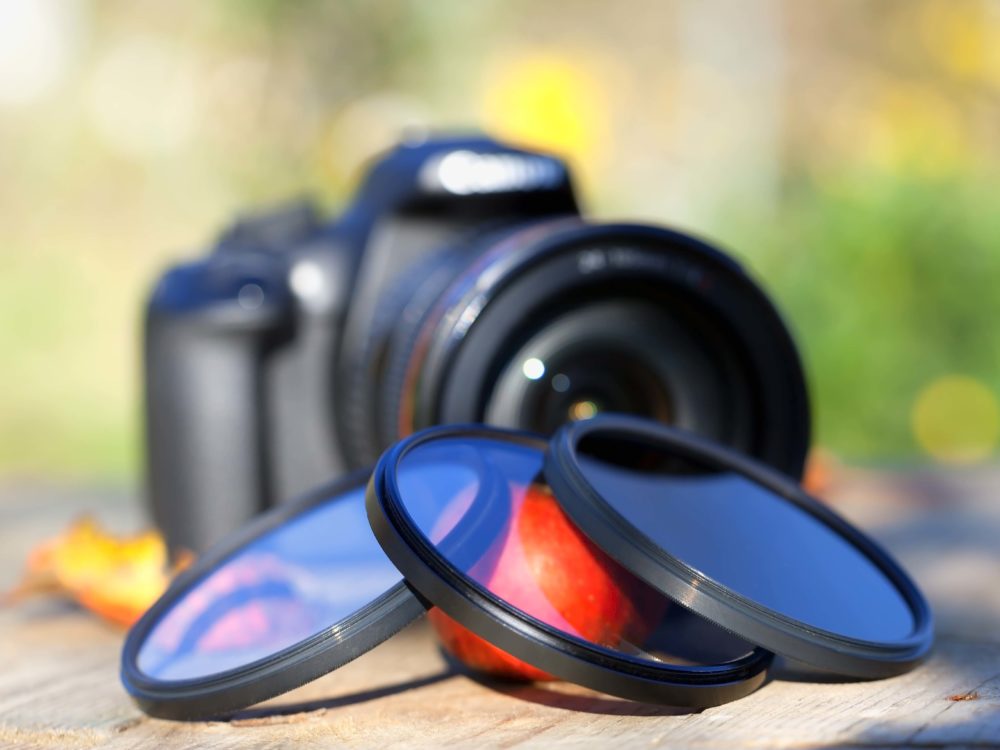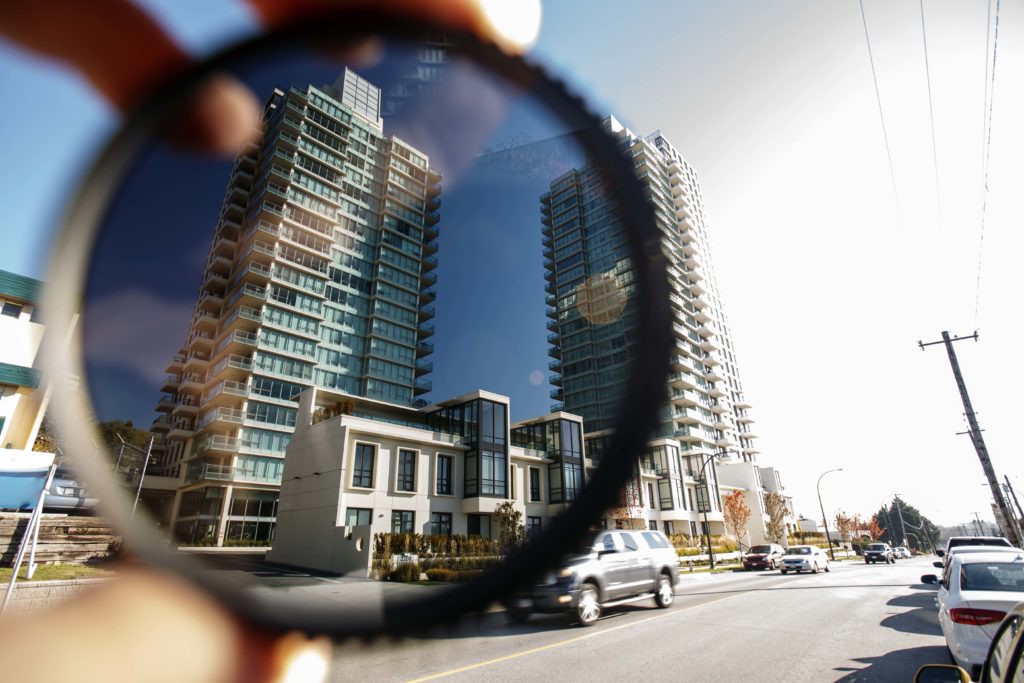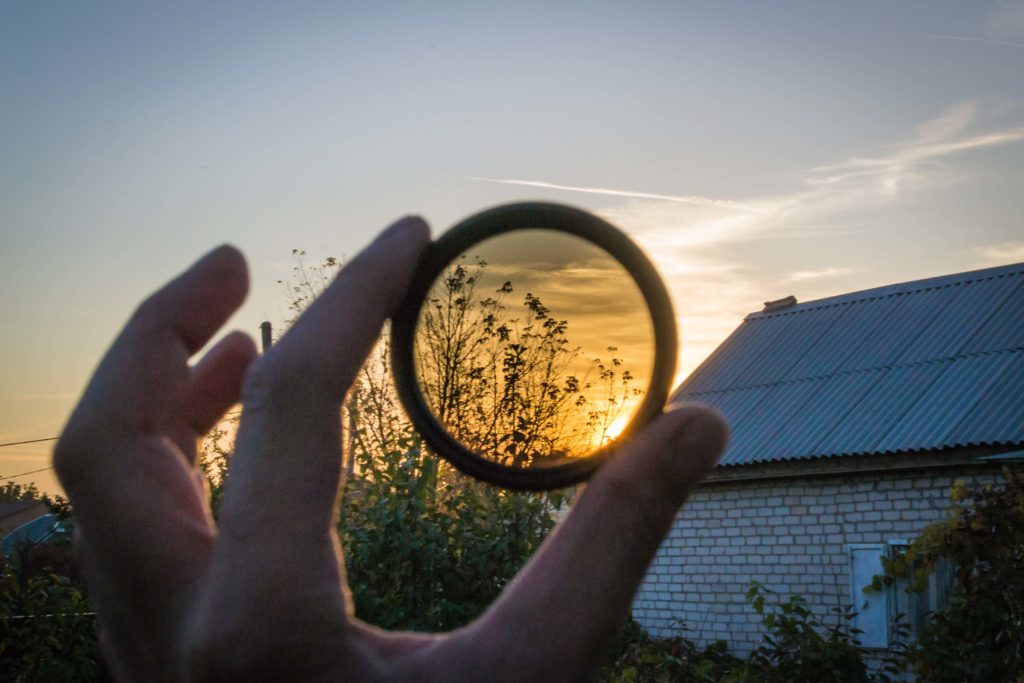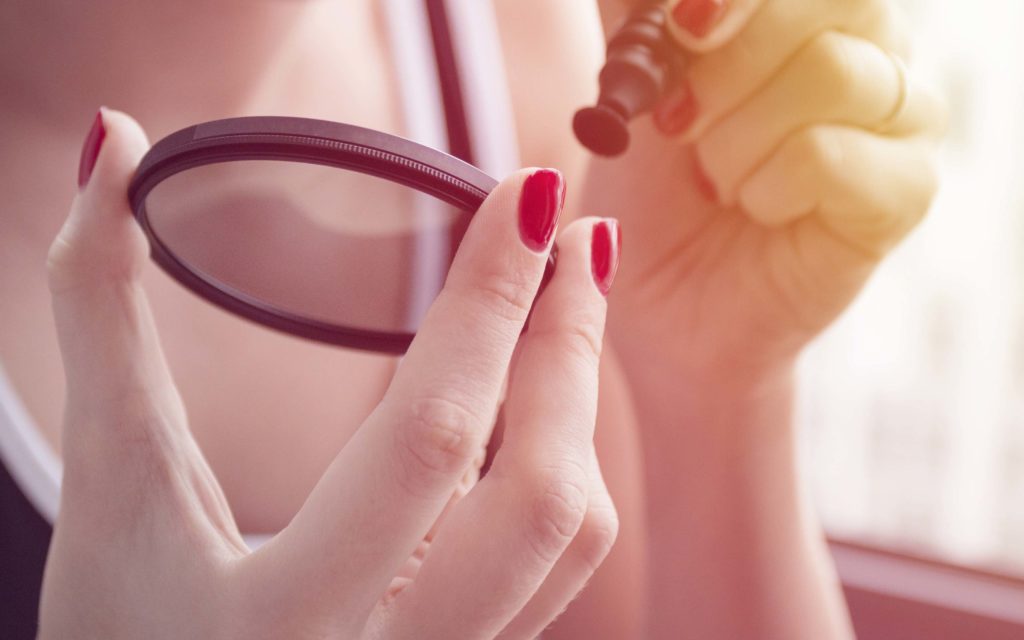
Many new photographers don’t recognize the importance of camera filters. But the truth is, lens filters can produce unique image effects that are difficult to replicate with photo editing software.
10 Essential Camera Filters Every Photographer Should Invest In
- Protective Filters Safeguard Your Lens
- Ultraviolet Filter Offers Protection and Clarity
- Polarizing Filters Enhance Colors and Reduce Glare
- Color Filters Adjust Colors and Temperatures
- Black and White Filter Enhance Monochrome Photos
- Close-Up Filter Empower Macro Photography
- Neutral Density Filters Are Like Sunglasses for Your Camera
- Soft-Edge Graduated Neutral Density Filters Are Ideal for Rugged Terrain
- Hard-Edge Graduated Neutral Density Filters Enliven Flat Horizons
- Reverse Graduated Neutral Density Filters Let You Shoot Towards the Sun
Purchasing camera filters can add costs to your photography budget. At first, it can be hard to know which image filters you should acquire early on and which you can buy later. We’ll give you expert advice to help you prioritize your filter purchases. Remember that even if you buy a full set of filters, you can always touch up your photos with professional Lightroom presets. The best photographers know how to use both filters and Lightroom presets to create exceptional images.
When it comes to photography camera filters, there are two essential filter shapes you can buy—round and square. Round filters screw directly into lenses. While these round camera filters can be very secure, you could end up buying the same filter multiple times if you have different types of lenses that vary in thread size.
If you do opt for round camera filters, pay close attention to the thread size of your lenses. All camera lenses have a threaded section that let you screw on filters. Common sizes include 52mm camera filters, 62mm camera filters, and 72mm camera filters.
With square filters, you need a filter holder that has adaptor rings to fit different size lenses. Assess your needs and goals when deciding if your camera filters should be round or square.
1. Protective Filters Safeguard Your Lens
As you might expect, a protective filter safeguards your delicate lens. You can use this type of clear filter for all types of photography to protect your lens from dirt, dust, moisture, fingerprints, and scratches. Without protection, the coating on your lens can degrade over time and diminish its quality. In most cases, round protective filters that screw into your lenses are the best option—since this offers the highest level of protection.
2. Ultraviolet Filter Offers Protection and Clarity
An ultra-violet filter—also known as a UV filter, UV haze filter, or skylight filter—also protects your lens. In the days of film photography, UV camera filters were a must-have for every photographer to protect the film from UV light. Today, the best UV haze filters can protect your camera lens while reducing the effects of moisture and atmospheric haze for crisper outdoor photos.
UV filters come in varied strengths—and ones with stronger coatings can enhance visible light by creating a warming, amber cast on photos. If you find yourself regularly shooting in areas with intense ultra-violet light exposure—such as near the ocean or on snowy terrain—consider a stronger ultra-violet light filter. Alternatively, you can select skylight filters which come in two strengths and can produce a magenta tint that helps enhance skin tones.
3. Polarizing Filters Enhance Colors and Reduce Glare
A polarizing filter can help increase contrast, enhance image colors, and minimize glare and reflections when shooting in bright light conditions. A good filter for all types of photography, you’ll find that most polarizing filters have a rotating mount. Once you’ve attached the filter, you can rotate it and observe the effect through the viewfinder or rear screen on your camera. You’ll usually find round polarizing filters, although square filter options are available. These filters are frequently used with wide-angle lenses.

4. Color Filters Adjust Colors and Temperatures
As its name implies, a color filter can help you make color adjustments while shooting images. Simply put, this filter is a piece of colored glass that you position in front of your camera lens. You can also find thin sheets of plastic, sometimes known as camera gel filters, that modify light colors.
All camera color filters have different purposes. For example, a red filter can absorb blue and green tones and is a good choice for a black and white photo with high contrast. A green photo filter can enhance skin tones for portraits taken with artificial light. And yellow picture filters are good choices for outdoor images and a favorite of landscape photographers.
A cooling or warming filter is another type of color filter. This filter can adjust the temperature of images. With a cooling filter, you can add more blue to the image to reduce unwanted gold or orange tones. A warming filter has the opposite effect. It introduces the lovely orange tones you often find when shooting during the golden hour.
If you use a warming or cooling filter, always remember to set your camera’s white balance first. If you don’t, your camera may correct for the filter and negate its effects.
5. Black and White Filters Enhance Monochrome Photos
A black and white filter is a type of color filter that you can use to enhance a black and white or monochrome image. Depending on the needs of your photo, these camera filters can be green, yellow, red, or orange. Each variant brings out different shades in your monochrome photos.
Interestingly, red filters can produce an extreme effect that can make your image look like it was shot under infrared light. This can be a great alternative to true infrared photography, as infrared filters can be quite expensive.
6. Close-Up Filters Empower Macro Photography
Used for close-up or macro photography, a close-up filter acts like a pair of reading glasses for your macro lens. It shortens the focal length, which allows your primary lens to bring small details into sharper focus. You can find these camera filters in a range of strengths to help you get perfect shots of tiny, hard-to-see items.
7. Neutral Density Filter Are Like Sunglasses for Your Camera
A neutral density filter is useful in situations where long shutter speeds or wide aperture are necessary. You can think of this type of filter as sunglasses for your camera. Typically, a neutral density filter is a darkened piece of resin or glass that limits the light that reaches the lens and camera sensor—without affecting colors. You’ll often find these types of dark camera filters used in landscape or flash photography.

8. Soft-Edge Graduated Neutral Density Filter Are Ideal for Rugged Terrain
Graduated neutral density filters feature a both darkened glass and clear glass. They come in variations to suit a range of photography applications.
A soft-edge graduated neutral density filter is an essential item for landscape photos where the terrain isn’t flat. This filter helps you prevent over and underexposure in high contrast shooting situations. It’s perfect for shooting images of mountain ranges, cityscapes, and other rugged outdoor environments.
9. Hard-Edge Graduated Neutral Density Filter Enliven Flat Horizons
If you want to capture a perfect ocean view, a hard-edged graduated neutral density filter is essential. It helps to balance exposure when contrast is high—such as when the skies are bright and the landscape is dark. Also, it’s the best choice for photographing flat horizons—like a wide-open field or a vast desert landscape.
10. Reverse Graduated Neutral Density Let You Shoot Towards the Sun
This filter type features a dark center with a lighter edge. You can use it to shoot towards the sun when outdoors without any risk of overexposure.
What Camera Filters Do I Need? Advice for Beginning Photographers
Knowing basic facts about various camera filters is an important first step for every beginning photographer. Depending on your goals and skill level, you can decide which filters to purchase first—and which can wait until you gain more experience.
Some cameras—including smartphone cameras—have built-in filters that can meet many of your needs. Check your camera or phone model to learn about specific Samsung camera filters, Canon camera filters, Nikon camera filters, and others. And remember that you can achieve the look of some camera filters with high-quality photo editing apps and software.
When deciding which camera filters to purchase, consider these essential filters for your initial photography needs:
- UV or SkyLight Filter: When looking to buy camera filters, many photographers select a UV or Skylight filter first. These types of filters can both protect your camera and help you gain experience with outdoor photography.
- Polarizing Filter: Another great initial choice for outdoor photography is a polarizing filter. This versatile filter can empower you to take amazing photos of the skies (try it with a wide angle lens) to capture a clear contrast between the sky and clouds. When using wide-angle lenses, however, take care to avoid dark bands that can appear in the sky due to uneven effects of this style of lens.
- Neutral Density Filter: Look for straight neutral density filters that don’t require any adjustments. You can also find variable neutral density filters that are useful when shooting with a shallow depth of field or extremely long shutter speed.
- Graduated Neutral Density Filter(s): You’ll likely find value in either a hard-edge or soft-edged graduated neutral density filter—or possibly both if you shoot in a wide range of locales.
While the other types of lens filters seem less valuable for new photographers, always evaluate your photography approaches and goals. For example, if your prime interest is macro photography, you obviously need a close-up filter sooner rather than later. It’s probably best at first to steer clear of highly-specialized filters—such as solar eclipse camera filters—unless you truly need them.
When you set out to buy camera filters, you’ll find a wide range of prices and options. As with anything, quality varies by price—so don’t always opt for the lowest-cost alternative. A low-grade filer can diminish the look of your photos, so beware.
The most prominent camera filters brands in the marketplace today are Hoya, B+W, and Tiffen. Turn to B+W for top-quality glass camera filters and coatings at the highest camera filters price. If you have the budget for professional camera filters, B+W is an exceptional choice. Hoya is a solid, mid-range option, with Tiffen offering the lowest cost and quality of the three.

Select the Right Camera Filters for Your Photography Needs
Photography can be a costly hobby—and you may need to make some tradeoffs when you’re just starting out. However, be sure to budget for some basic camera filters. You can often find reasonably-priced filter kits that will help you learn the basics of using camera filters.
At a bare minimum, set aside some funds for basic UV camera filters. You can use these camera filters to safeguard your lens from dirt, grime, fingerprints, and other substances that can ruin its coating and detract from your photos. Also, you can use this camera filter to experiment with DIY camera filters using items you likely have at home. Slather on some petroleum jelly on the surface of your filter for a hazy appearance or draw on it with highlighters to create colored effects.
Never put any substances like these directly on your lens, or you could damage it. Also, have supplies on hand for cleaning camera filters. You can use the same items you rely on for your lenses—blowers, soft brushes and cleaning solutions and tissues designed specifically for delicate camera equipment.
Polarized lenses, neutral density lenses, and graduated neutral density lenses are other good options to have on hand for better color control and glare reduction. It always pays to shop around and wait for a sale before you buy camera filters.
With some research and patience, you can find high-quality camera filters online at a reasonable cost. Smart shopping can help you keep funds in reserve for Lightroom presets that can give your photos a bright and cheerful or moody and rustic vibe with just a few clicks. As you become more familiar with camera filters, you’ll gain valuable photography experience and notice a vast improvement in the quality of your photos.
